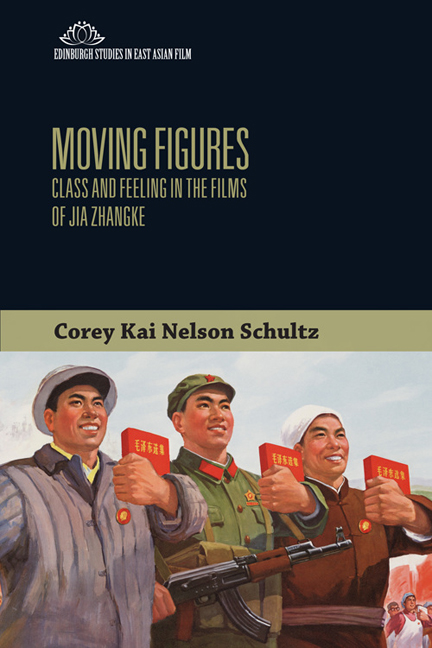Book contents
- Frontmatter
- Contents
- List of Figures
- Acknowledgments
- Introduction
- 1 The Worker Class: From Leader to the Margins
- 2 The Peasant and the Mingong: From Empathy to Sympathy to Looking Back
- 3 The Soldier: From Degraded Reproduction to Avenging Hero
- 4 The Intellectual: Power and the Voice
- 5 The Entrepreneur: From Crook to “New Reform Model”
- Notes
- Filmography
- Works Cited
- Index
2 - The Peasant and the Mingong: From Empathy to Sympathy to Looking Back
Published online by Cambridge University Press: 10 May 2023
- Frontmatter
- Contents
- List of Figures
- Acknowledgments
- Introduction
- 1 The Worker Class: From Leader to the Margins
- 2 The Peasant and the Mingong: From Empathy to Sympathy to Looking Back
- 3 The Soldier: From Degraded Reproduction to Avenging Hero
- 4 The Intellectual: Power and the Voice
- 5 The Entrepreneur: From Crook to “New Reform Model”
- Notes
- Filmography
- Works Cited
- Index
Summary
Introduction
This chapter analyzes the figure of the peasant (农) and its incarnation as the rural-to-urban peasant migrant worker, referred to as the mingong (民工), a cross between nongmin (农民, “peasant”) and gongren (工人, “worker”). Although Jia's films deal with many kinds of migrants – middle class economic migrants, student migrants, migrant entertainers, and even a migrant serial killer – this chapter focuses specifically on the peasant migrant, and how their representation in the films transitions from an individual mingong with agency (albeit frustrated), to a sacrificial individual mingong, and finally to a wretched mass.
In order to understand this transition, I begin by analyzing the little-seen peasant figures in the films. I argue that they are represented as elderly relics of the Maoist era, but without their previous power and authority, and that this retrograde state seemingly returns them to their traditional Confucian representation as docile and naïve. Next, I examine the mingong as individual agent, and how this figure is represented in the early films as a figure to identify and empathize with, but later becomes an object of sympathy. I compare two different representations of individual mingong protagonists that appear in the films – the characters played by Wang Hongwei in Xiao Shan Going Home and Xiao Wu, who are figures with agency whom the viewer can identify and empathize with, and contrast them with the sympathetic and sacrificial mingong figure played by Han Sanming in Platform and Still Life. Then, I examine how the mingong becomes a nameless mass that is embodied and commodified, as evidenced in the (male) nudity in Still Life, Useless, and Dong, and the twinning of the mingong body with the neoliberal motif of money in Still Life and The World. This commodification has made the peasant body disposable, therefore emphasizing their subaltern status as the nation's precariat, who have been physically and metaphorically deracinated, and wander the ruins of postsocialist China in search of employment.
- Type
- Chapter
- Information
- Moving FiguresClass and Feeling in the Films of Jia Zhangke, pp. 48 - 83Publisher: Edinburgh University PressPrint publication year: 2018



